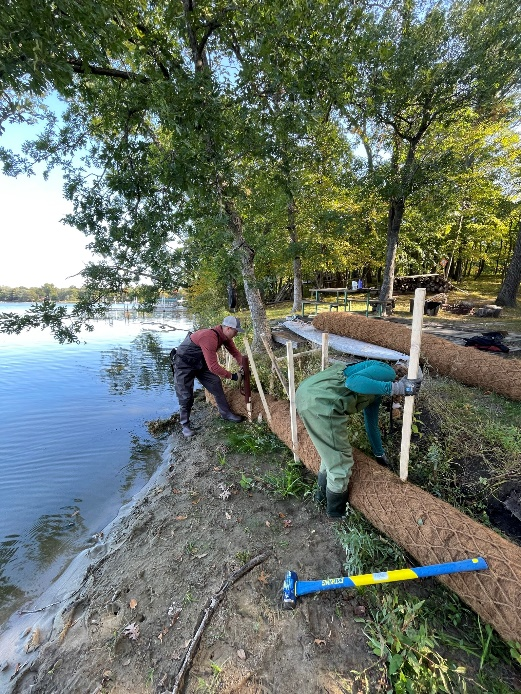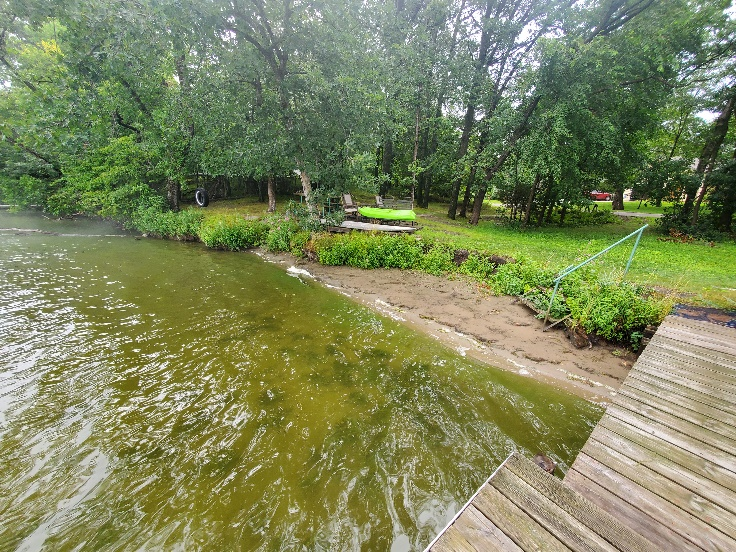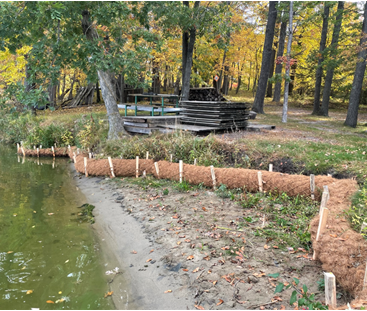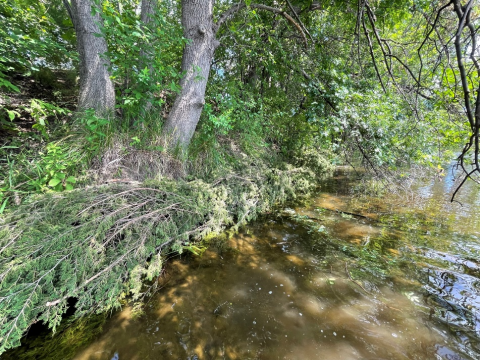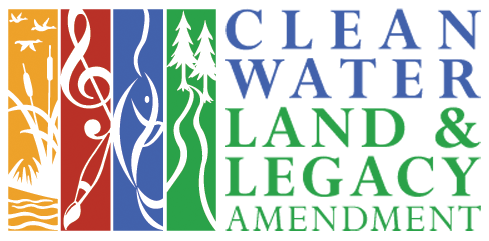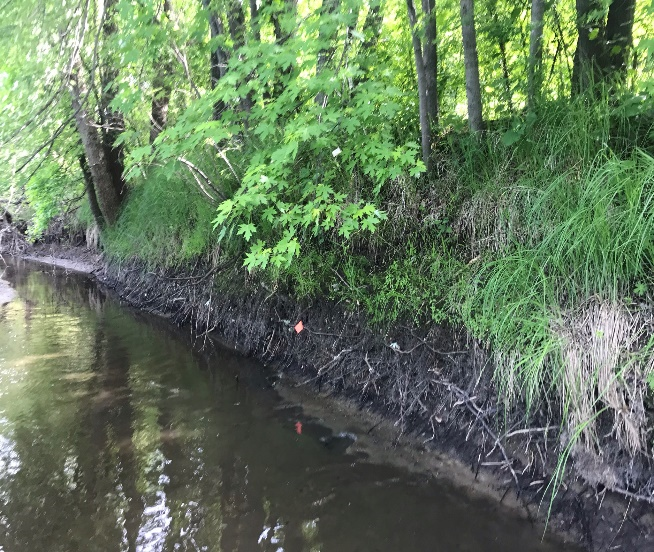The Anoka Conservation District (ACD) recently installed a 70-foot lakeshore restoration project to mitigate active erosion at a property on the east side of Martin Lake in northern Anoka County. This section of property is heavily used by the family and was a priority to keep intact. The shoreline had receded/eroded back, with certain areas experiencing severe undercutting caused by wave action. These vulnerable sections could lead to additional property loss in the future and contribute to pollutant loading into Martin Lake, further degrading water quality.
As designed, this project should stabilize the shoreline and allow new vegetation to become established from existing native sources. It is estimated that the project will prevent 1.3 pounds/year of phosphorous from entering the waterbody throughout the life of the project.
Coir logs are designed entirely of natural materials that are made to biodegrade into the soil overtime. The material is inexpensive, durable, and able to be shaped uniquely to the shoreline. Coir logs can be purchased in different densities, lengths, and diameters, depending on the erosion situation. Compared to other types of erosion control practices, coir logs are low in cost and can be installed by landowners without professional guidance. These practices are also easy to maintain because landowners can fix individual sections that may be damaged over time.
Coir logs protect against wave action and allow banks to stabilize while encouraging vegetation growth. Sections of coir logs are installed in a continuous line near the bank and secured into place using wooding stakes which will also naturally degrade. Aquatics plants are commonly planted into the coir log to provide more enhancement.
This project was funded by the landowner and the ACD cost-share program. ACD provided project administration, design services, and project installation.

